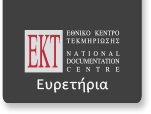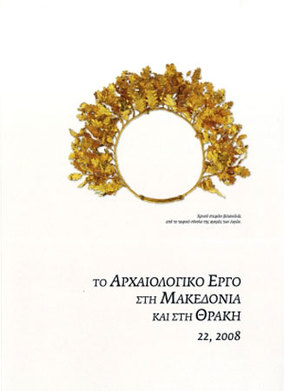Τούμπα Θεσσαλονίκης 1985-1996 : το ανασκαφικό έργο στην τράπεζα και το νεκροταφείο
Part of : Το Αρχαιολογικό Έργο στη Μακεδονία και στη Θράκη ; Vol.10, No.Α, 1996, pages 389-406
Issue:
Pages:
389-406
Parallel Title:
Toumba, Thessaloniki, 1985-1996 : excavation work on the «table» and the cemetery
Author:
Abstract:
The archaeological site of Toumba in Thessaloniki is located on a plateau to the east of the city. It consists of a mound with successive building phases dating from the Bronze Age (early second millennium - 1100 BC), the Iron Age (1100-800 BC) and the historical period (after 800 BC), of a trapezoidal area (table) around the mound with remnants of a settlement of the Early Iron Age, the Archaic period (800-480 BC), the Classical period (480-323 BC) and the early Hellenistic period (323-300 BC), and various scattered traces over a radius of five hundred metres from the settlement and its extensive cemetery.With the exception of the prehistoric mound, which is being explored by the Aristotle University of Thessaloniki, the excavations in this archaeological site have been conducted, since 1985, by Ephorate XVI of Prehistoric and Classical Antiquities.The excavations have shown that the small city ( polisma ) which developed at Toumba, Thessaloniki, at the head of the Thermaic Gulf, displayed elements of local tradition together with influences from centres in the Aegean and from the main Greek cities of the Archaic and Classical periods, and of Athens in particular. The small city at Toumba can most probably be identified as Therme, or part of it. With twenty five other cities, Therme was part of the process of synoecismus promoted by Cassander in order to found Thessaloniki in 315 BC.
Subject:
Subject (LC):
Keywords:
Θεσσαλονίκη, συνέδρια , νεκροταφεία
Notes:
Περιέχει κατόψεις και εικόνες




